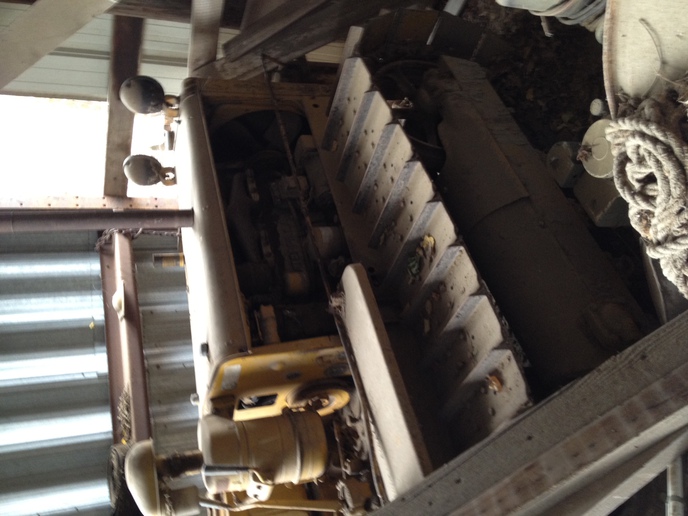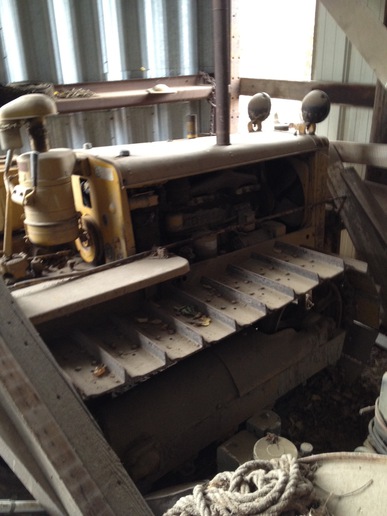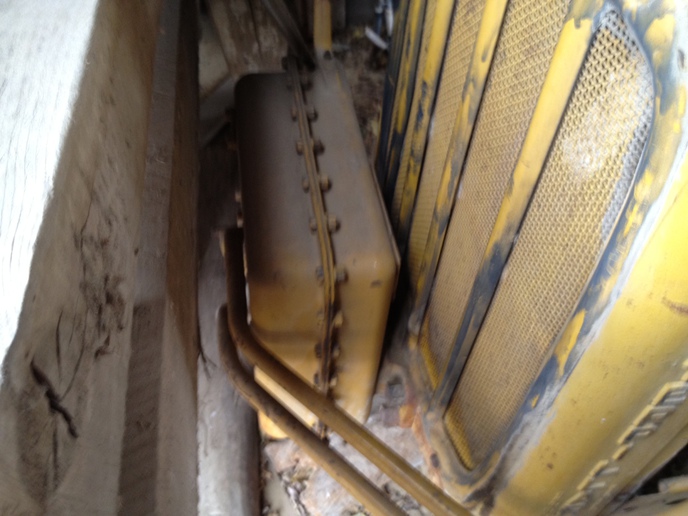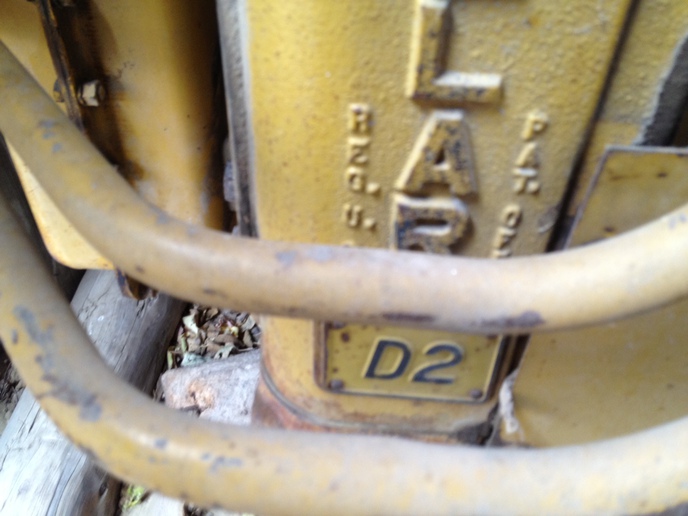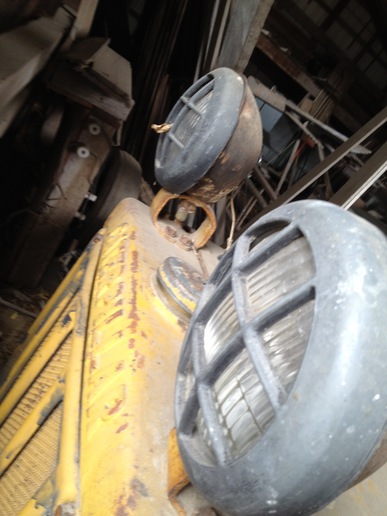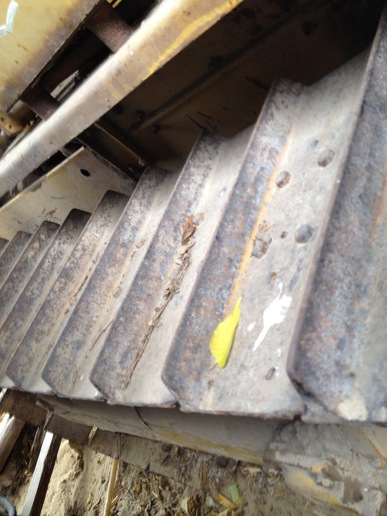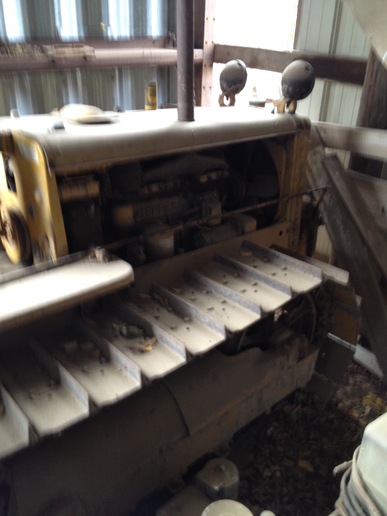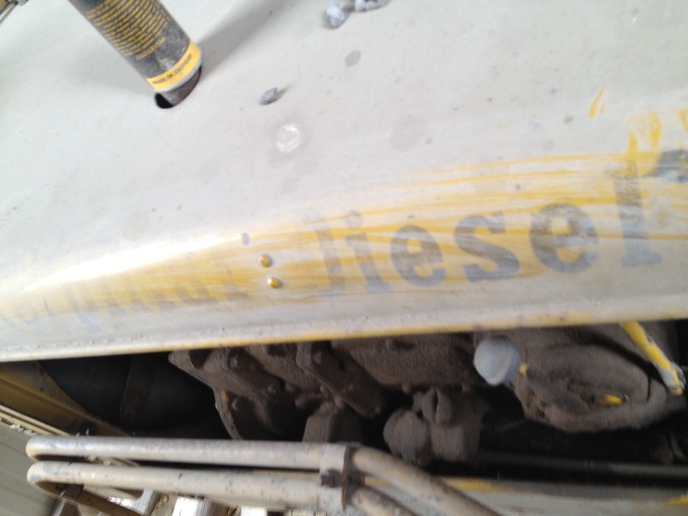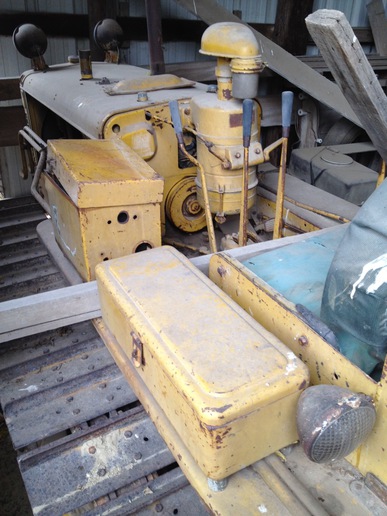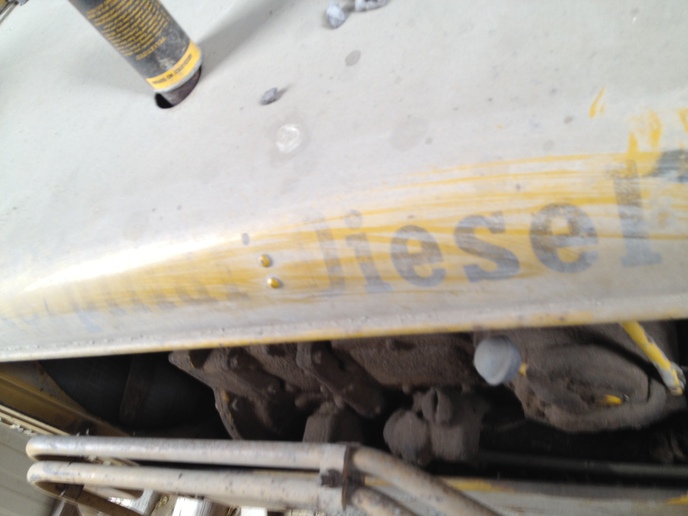Don't quote me just yet, in those years you had starting engines for the D2, D4 and I thought the D6 that were similar, the same or in "that ballpark" if you will LOL ! For these tractors the starting engines were mounted in the same fashion, on the back of the diesel, having horizontally opposed pistons, unlike the early vertical 2 cylinder starting engine which was common to the Diesel 40, RD6, (early 3 cyl. D6 like 2H, 5R) D7, D8, the latter 2 got an updated 2 cylinder starting engine in the 50's, just kind of some general information on these.
I have a couple of stacks of military technical manuals, for government purchase order tractors, D4, D6, D7, D8's, I do not have any books on D2's, but the configuration on a D4 might answer the question. I collect these and enjoy the older Caterpillar tractors as much as I do Fords, grew up on both, we had a Ford dealership, funny how they never leave you LOL !!
Now he's got the books for it too, that's just awesome, nice little extra, which for these you really need to have, there is no question on that, Operators Instructions, Serviceman's Reference Books, and Parts Catalog are a necessity.
Those guys on ACMOC/ACME are an unbelievable wealth of information & experience, there were a few old hands who spent careers working for Caterpillar, like Stumpjumper (SJ) out of PA, I can't hold a candle to what they know about these, Old Magnet has probably forgot more than I'll ever know about them etc, so I would humble myself as knowing enough to be dangerous LOL !!!!!!
I've ranted about taking care of starting engines on the crawler forum for years, only reason is I am thinking of those who may not know about the scant few pitfalls in regards to taking care of those high rev little old technology engines.
The 2 cylinder vertical engine does not share oil, it has its own sump. The coolant will circulate when the diesel is spinning only on those. Now, I went and looked in a D4 military tech manual, read the operators instructions, it leads me to believe because it states water temperature is registered by a gauge on the dash, later tractors, that circulation of coolant is achieved by the diesel's water pump, the kind with the packing nut you have to tighten, special wrench came with the tractor for this. Maybe I'm wrong but the reason I mention it is these darned tractors are so old now, not many people are left who ran them back then and simple things to remember like this with the coolant and the gas thinned oil gets forgotten, then a new owner finds one like this and may not know much about it and makes a costly mistake, none of the starting engines are air cooled, that much is true LOL !!!!
The D4 manual also states the starting engine has its own crankcase compartment for oil so I would bet the D2 being similar, same or almost the same starting engine may not share oil with the diesel. Might be comparing apples to oranges, but in an attempt to be helpful or make someone aware of something important. Details may not be 100% accurate, but the intent is to be helpful if possible.
You have the process right, that starting engine really was ahead of its time by virtue of what it did to start the diesel. The starting engine exhaust was allowed to warm the diesel's intake air, huge help when cold. The coolant, and how many gallons, definitely is warmed and circulated, warming the engine block, another bonus in cold temps. The diesel's crankcase oil is circulated and you would not turn the fuel on until you at least saw pressure on the oil gauge and maybe for awhile after. Though the oil may not warm much, its moving and circulating and getting more viscous for as long as the operator sees fit, eventually you have to put the compression up to half, starting engine may start to lug a little, but you are now starting to heat the cylinders with compression, turn it to run and that starting engine, in the cold may lug right down, but now you are heating those cylinders up and once warm on a engine with decent compression or like my one D7, it will immediately fire, colder temps, more wear, you will be on the starting engine spin cycle. You sure can't prepare an engine to cold start in winter temps any better than that, especially in those days. I had a guy get a truck stuck in one of my fields back in '02 and I had to get the old D7 fired up when the temps were in the teens, and boy did that starting engine lug, but I had it in good running condition, it would fire with the hand crank, though it also has electric start. I had to let it spin a long while, but as soon as I put compression to it and gave it fuel, smoke rings went up in that crisp air and she slowly roared to life one cylinder at a time.
I used to ride with my dad on the older and worn out D7 I have, as a kid, there was no better sound or interesting piece of equipment, like you remember with your dads friend, all of the naturally aspirated ones have such a nice sound, especially the 3 cylinder D6, and the 4 cylinder D7's when under a heavy load, I think the 4 cylinder is the best for sound LOL !!!
I ran many 955's but later ones, you still see many of those around, electric start conversions are ok in warmer temps, but without some kind of other starting aid, glow plugs, heated manifold or what have you, I cannot imagine it working well for say one of these era D7's or other models from those years, plus they don't get used a lot, you had better maintain those batteries, plus the initial conversion cost may be 2K by now on some of these, was well over 1K awhile ago, and is why I always suggest taking good care of the starting engine. People convert them, I know of one D7 3T that it was done on after the starting engine tossed a rod, tight motor with some cranking and a little ether will work ok in cold temps, but nothing like a starting engine when its real cold, like less than 0 F.
Sure you can just take one out for a spin LOL, like these old ones, that's after you've lubed every point shown on the fold out lube chart, get your Alemite volume pump out to lube the track rollers etc. etc., then you have to start it as per the above LOL.
I just love these kinds of finds, almost as much as fence row or abandoned ones, which always need some major work or have a seized engine, steering clutch's might be seized, or so on.
You look at those photos and with just a cleaning you have a very nice, (with some extras-lights, pto, hydraulics) straight D2, with original paint and decals in very nice shape.
He's found a D2 5U in very nice condition, seller was very generous to him and hopefully it confirms out to be what it appears to be, that being the case, the value as is, to a collector, or anyone interested is going to be much more than he paid, its just one of those tractors that turn up once in awhile, just nice to see one in that condition, aside from some fading and minor age related cosmetics, you get to see one exactly like it was delivered, history is kind of preserved a little. They're not rare as a model, but low hours, light use, rare to find in that condition with such an apparently nice undercarriage.
I agree, will be nice to see what he does with it along the way of getting it up and running, and so on, one thing is for sure, make sure it gets under a roof in a dry area !!
Theres one other tidbit of info you may appreciate, in regards to electric start conversion. I believe that before the D2's production run was ended, they could be had with factory direct electric start, and I thought both the D2, and D4 either had provisions to somehow have both, you would have to read the old posts on ACMOC/ACME and see about conversions, there were some threads posted as a bulletin there about electric start conversions, part numbers, helical gears matching the flywheels and starter pinion, as well as machining out the hole in the housings where needed to, I thought I recall at some point the factory prepared some of these, and some could actually have both, my memory is limited on that, and I may not have this totally correct, just something of interest and knowing you worked in a machine shop or have that background, all of this has to be interesting, or I hope so LOL !!!!
